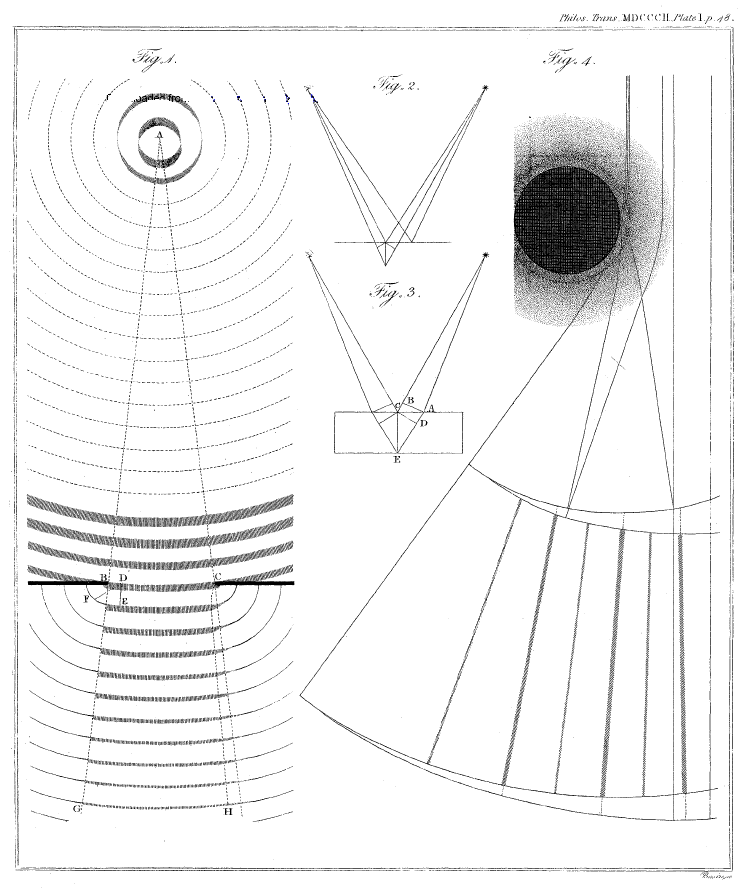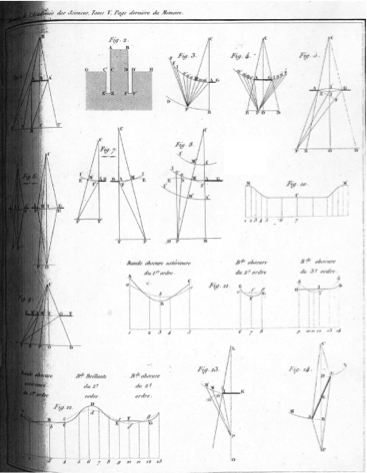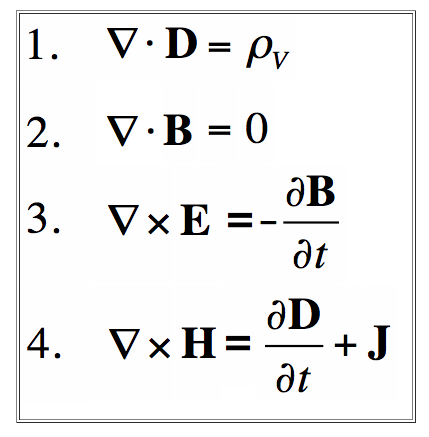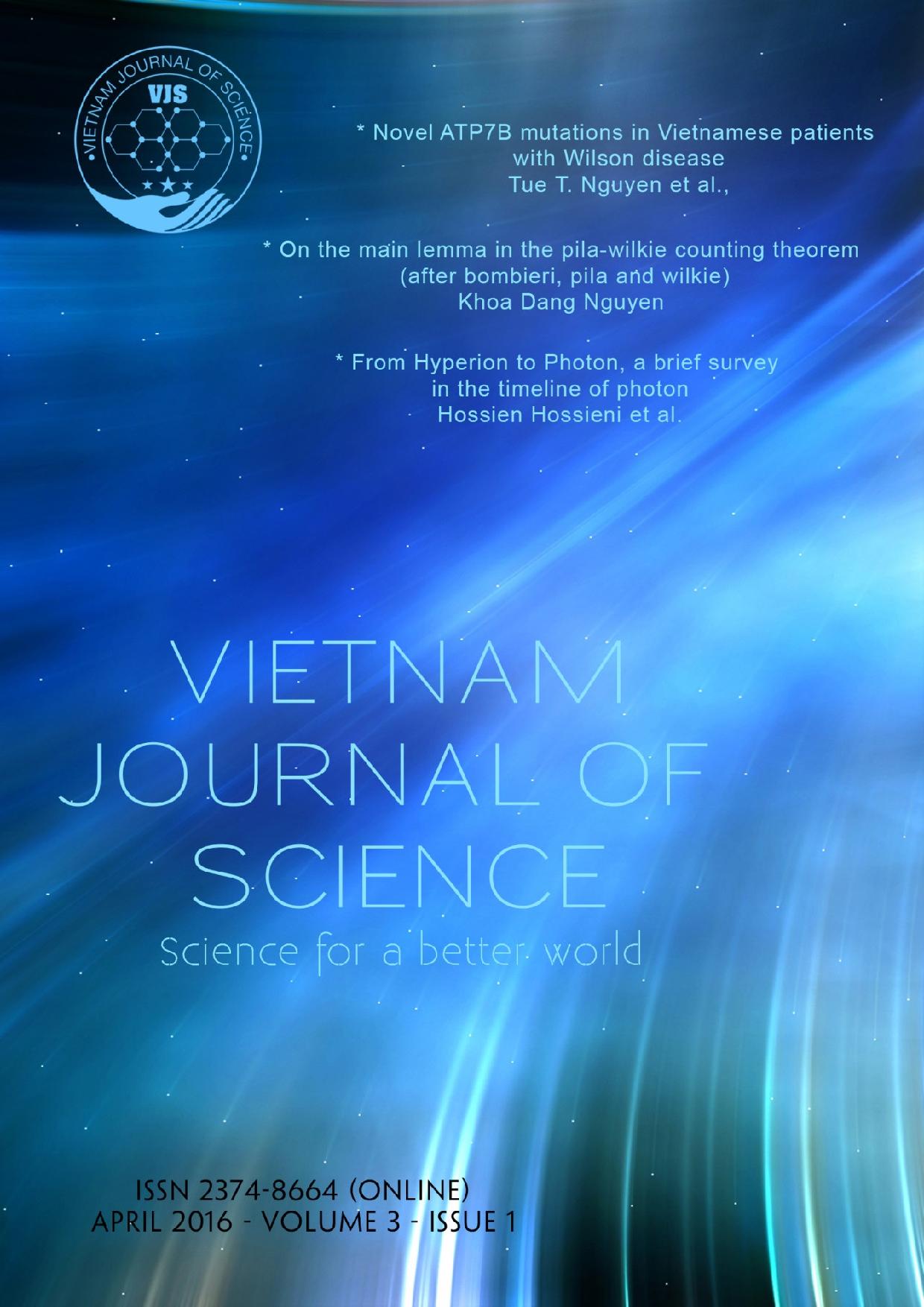Hossien Hossieni1, J. M. A. Fatah1, Sarwar Mohammad1, Mohammad Naby1
1School of science, Department of physics, University of Sulaimani, Kurdistan-Iraq
Abstract
We present in this paper a chronological study on the main line of the electromagnetic radiation throughout the history of mankind. This history is divided into three distinct eras: pre-classical, classical, and modern era. In pre-classical era, myths are studied starting with Hyperion (god of lightning), extramission theory and Euclid principles. While in classical era, the main focus is on classical theories of physics through introducing the Maxwell equations and Huygens and Newton’s theories on light. In addition, aspects of light via particle and wave theory are reviewed. Special relativity, photoelectric effect and radiation in quantum mechanics are the studied topics in the modern era. We present the advancement in photonic science from last century till present time and show its influences on fields such as laser, quantum field theory, holographs, LED and entanglement.
Keywords: Hyperion, photon, extramission, Euclid, Newton, Huygens, Maxwell equation, special relativity, Einstein, laser, LED, entanglement, radiation.
1. Introduction
Democritus said particles were first but according to Heisenberg symmetry was first as he stated in his book, “Physics and Beyond” (1). Photons need to be added to the above two if we take into consideration the Big Bang theory. Photons dominated the universe in the time interval spanning from few seconds after the Big Bang to 380000 years after that (2).
Light consists of photons and is a branch of the science that is as old as the modern human. It is not clear who first started working in this field but nowadays a large number of researchers work on the physical properties of light and electromagnetic radiation in general. Applications of the properties of electromagnetic radiations are enormous and cover almost all aspects of life and at the same time influence all fields of science and technology.
Scientists and engineers have made massive progresses in photonic sciences in the last century. Consequently, physicists nowadays know quite a lot about photons.
We consider three different historical periods for the photons: pre-classical, classical and modern. There is clearly a big difference in understanding the nature of electromagnetic radiations when one compares these three distinct periods. The history of photon was full of myths. Towards the end of middle ages, the science of electromagnetic took a definite shape and by the end of eighteenth century we had a complete classical theory of radiation.
According to Greek myth, Theia was a goddess of shining blue light in the sky who was married to the god of light, Hyperion, and they had three bright children: Helios (Sun), Eos (Dawn), and Selene (Moon) (3).
Maxwell equations form an excellent theory covering most of our knowledge on light and other electromagnetic radiations. But our proper understanding of the nature of electromagnetic radiation is attributed to the dawn of quantum mechanics and Plank’s theory of radiation. In quantum mechanics, the constituents of electromagnetic radiation are tiny particles called photons.
It is impossible to imagine today’s technologies and our lives without having electricity, laser, fiber optics, telecommunications, etc. Of course, progress in the field continues and it is envisaged that photonic computers will be the next future technology (4). Furthermore, our cosmological understanding of dark energy and Big Bang passes through photonic sciences (5). One can watch the history of the universe unravelling through studying its microwave background (6).
Our knowledge about the sun and other astronomical objects like black holes, neutron stars, supernova, and far galaxies depends on our understanding of photonic sciences (7).
All quantum transitions occur via absorption or emission of a photon (8). In quantum field theory, photons are the interaction mediators and carry electromagnetic force. Furthermore, matter and antimatter can be created by photons (9). According to the Heisenberg uncertainty principle, vacuum is occupied by virtual photons (9-10). Scientists have recently made huge progress in photon entanglement. Many people believe that the twenty first century is the century of quantum mechanics and certainly photons constitute the bases for these quantum mechanical technologies (11).
We try, in this historical prospective, to show a brief survey of photonic sciences from the ancient Greek to the present time.
2. Pre-classical period
The first thoughts of humans about light and optics have been recorded in the Greek myths. Greek people believed in god and supernatural powers and they used extramission theory to explain the vision. According to this theory, vision is accomplished by rays of light that are emanating from eyes (12) (Fig. 1). But experiments disapproved this theory and showed that light reflects or emits from objects and not eyes. Atomists were the first people who tried to deliver a neutral consideration and as a result they proposed the intromission theory. Democritus (460 B.C. - 370 B.C.) indicated that the air between the eyes and objects are compressed and this air carries various colours that appear in it (13). Epicurus (341 B.C. - 270 B.C.) suggested that atoms flow continuously from objects to the eyes. The object does not shrink as other particles replace and fill in the empty space14). Plato (427 B.C. - 347 B.C.) came up with another theory for vision. This theory was a combination of the intromission theory by the atomists and the extramission theory (15). The theory states that light originating from the eye is the reason for vision. Plato claimed that “a stream of light or fire” comes out from observing objects (16). Moreover, the third theory for explaining vision was stated by the great Greek philosopher Aristotle. He rejected all the previous theories and presented his own idea as luminous bodies such as fire causes light (17). While the mathematician, Euclid (325-260 B.C.), presented some axioms that were significant in the history of science in his book entitled “Optica” (18). According to Euclid’s axioms, there are far-reaching rays originating directly from the eyes and form a cone having apex in the eye and a base that limits the vision. If the visual cone falls on an object then it will be visible. Of course, the bigger the angle for which the object is seen under, the bigger it will appear and if an object is hit by a higher visual ray, it will appear higher and vice-versa (19).

Fig. 1: In extramission theory, vision accomplished by rays of light that emits by eye (the image illustrated by Ibn Al- Haythm 11, century-eyetap.org)
Another Greek scientist who accepted Euclid axioms and added some improvements to them was Ptolemy. He supposed that the visual light is of the same nature as external light, for example the sun’s light. Ptolemy has written a book on geometrical optics and another on astronomy. Ptolemy continued with the Euclid scheme which was mentioned in the geometrical optics book. Although he believed in extramission but his theory was more to do with physics than the purely mathematical theory of Euclid (20). Towards the end of Roman Empire, a philosopher by the name of Galen (133-200) focused on the structure of eye. He was an anatomist and for description of his theory, he included terms from psychology and physics. He trusted that an optical pneuma travels along an optical nerve connecting eye with brain (21). The Roman Empire became weak in the fifth century and at the same time science in Europe ceased to progress. Meanwhile, Islamic empire appeared and Al-kindi was an Islamic scientist who translated scientific and philosophical texts of Greek philosophy into Arabic language. Al-kindi put many of his important works in optics in a book entitled “De Aspectibus” which was influenced by Greek philosophers’ imaginations about light (22). He also believed in Euclid extramission theory. According to Euclid, light rays have only one dimension, but Al-kindi claimed that they should have three dimensions. Alkindi accepted Galen theory of vision and Euclid and Aristotelian concepts on optics (23).
Furthermore, another Islamic scientist who made progress in optics was Alhazen. He successfully combined geometrical optics of Euclid and Ptolemy with intromission theory. The writings of Alhazen have a big impact on other scholars not only in Islamic world but also in Europe during the classical period (24).
3. Classical period
The differences between classical and pre-classical periods are that the arguments in classical period are more rational and empirical. It can be said that this period started with the work of Roger Bacon (1214-1292). He accepted almost all of Alhazen theory of vision. Bacon tried to tie various theories of vision into one theory. He accepted Aristotle’s idea that the wave is a passage of colour through a transparent medium. He refused the extramission theories of vision because he believed that a medium should be prepared to transmit the light and colours from an object. But Bacon did not succeed in his approach (25). The major advances occurred only after the European Renaissance shattered Aristotle’s scheme of the universe. By the end of the sixteenth and early seventeenth centuries, European scientists such as Copernicus (1473-1543), Kepler (1571-1630) and Galileo Galilei (1564-1642) destroyed Aristotelian concepts in science and established a new system for human thinking of nature (26). Among these three scientists, Kepler contributed the most in constructing a new theory for light. Kepler, for the first time ever, managed to provide a theory which included intromission theory of vision and geometrical optics that was started by Alhazen (27). Willebrord Snell (1580/1591-1626) also solved the old problem of the refraction of light as it passes through two different media (28).
The French philosopher Rene Descartes (1596-1650) established, same as Aristotle, a philosophical system that involved all natural events. There is only matter and motion in his system. He assumed that the space is filled with globules of a matter named as aether (29). A luminous body similar to the sun causes a whirlpool in this medium similar to a small stone making vortex in a pool filled with water. Light, according to this theory, has infinite speed and is transmitted from one point to another instantly (30). It assumed that aether is undetectable and carries both gravitational force and light (31). Descartes’ view on colour was an interesting one. He believed that colour is made as a result of rotation of the aether globules.(32) The most rapidly spinning particles give red colour while the slowest ones give blue colour and particles with medium speed give orange colour. On the other hand, he ignored emphasis on mathematical explanation of science which was introduced by Kepler and Galileo (33).
Most of the experimental works after Kepler and Discards are attributed to two great and famous physicists and mathematicians, Christian Huygens (1629-1695) and Isaac Newton (1643-1727). These two scientists had two different views on the nature of light that appeared as two contradicting opinions or theories for many years to come.
Huygens was the first scientist who invented mechanical clock. While he was a middle-aged man, he built the first watch and towards the end of his life, he published the wave theory of light. He suggested that light propagates as a disturbance in air or water. One of the most important predictions of the Huygens theory was that light should propagate slower in a denser medium (34). This prediction was verified experimentally in the eighteenth century. In the meanwhile, Newton worked on a theory known as corpuscular theory of light. This theory is widely accepted by the scientific community because Newton was the most famous physicist in the world at that time. At the same time, the wave theory of light was overlooked. Newton assumed that light consists of some small particles, which he called corpuscles (35). Newton performed some experiments to prove that light, in reality, is a mixture of all colours (36). A great rival to Newton was Robert Hooke (1635-1703). Hooke published a book on wave theory of light and Newton claimed that Hooke’s theory was wrong (37). Newton did not publish his theory until Hooke passed away (38). Corpuscular theory of light is a good explanation for traveling light in a straight line but it cannot explain diffraction and interference phenomena. At the end of the classical period, wave theory of light prevailed over the corpuscular theory. Thomas young (1773-1829) contributed greatly to the wave theory of light. He provided an experiment which clearly showed that light is wave (39). Young was the first scientist to realize that white colour of vision is a combination of three different colours and eye should contain three receptors for each colour (40). He conducted the double slit experiment in which two beams interfere with each other and create the interference pattern (Fig. 2). According to the classical physics, this phenomena is a purely wave and not a particle property (41). In 1817, Augustin Fresnel (1788-1927) a French physicist, has proved mathematically that light must show diffraction patterns such as water and sound waves. Fresnel theoretical result was checked experimentally and observation confirmed the result. This has brought an end to the Newton’s theory of light (42) (Fig. 3).

Fig. 2: Young Experiment, Illustrated by Thomas Young (41)

Fig. 3: Light diffraction proved by Fresnel (42)
Electromagnetic radiations have a common property named as polarization. This property was first discovered by Etienne Louis Malus (1775-1812) in the 1800s (43). Electromagnetic radiations are made from two orthogonal electric and magnetic fields and their orientations are random. A polarizer selects one orientation and removes the other. For electromagnetic radiations, there are two types of polarizations: left-handed and right-handed ones. Malus found that the reflected light, from a surface, below the Brewster angle is polarized (44).
In 1800, William Herschel (1738-1822) discovered a radiation, other than light, while he was studying temperatures of different colours of the spectrum from a prism. This radiation was infrared and he believed that red is hottest ray of this radiation (45). In 1801, another scientist Johann Ritter (1776-1810) found Ultraviolet (UV) radiation is beyond violate colour (46).
Another physicist who has made impressive achievements in the radiation science was Michael Faraday (1791-1867). Faraday conducted a series of experiments in order to determine some properties of electricity and magnetism. At the time the relationship between light, electricity and magnetism was not clear. He invented the lines of field to clarify how electricity and magnetism can affect each other (47). Before Faraday’s concept, people thought about mechanical medium as a mediator for transmitting force. This contemplation still holds and not only for electromagnetic forces but also for other forces like gravity. Besides field concept, Faraday showed experimentally that when charges move, electric field of these charged particles can create magnetic field and Vice Versa. On the other hand, vibrations of the field lines explained all electromagnetic phenomena (48). James Clerk Maxwell (1831-1879), expressed these phenomena mathematically in a set of well-known equations and made one of the greatest achievements in physics after Newton.
Maxwell collected and summarized all studies on electricity and magnetism and derived four important equations which are known as Maxwell equations. He analysed heat transfer equation and managed to obtain an equation for propagating electromagnetic waves. The Maxwell equations form a theoretical basis for all electricity and magnetism instruments in our lives. Using the electric and magnetic properties of the medium that light propagates in, Maxwell determined velocity of electromagnetic wave to be approximately 300,000 km/s and concluded that light should be an electromagnetic wave (49) (Figs. 4, 5).

Fig. 4: In this table, results of direct observation of the velocity of light, either through the air or through the planetary spaces is compared with the results via electromagnetic properties (49).

Fig. 5: Maxwell equations in differential form (Maxwell-equations.com)
These aforementioned equations show that electric and magnetic fields are not independent and a variation in one of them creates a variation in another (Fig. 4). This symmetry has been broken because the equations predict the existence of magnetic monopole as this has not yet been seen in nature (50).
In 1892, Hendrik Lorentz (1853-1928) derived an electromagnetic force which included the contribution of the total force due to both electric and magnetic fields (51). In Maxwell electromagnetic theory, waves travel in aether. On the other hand, there was an unsolved problem in Maxwell theory which was the disagreement between the theory and the experiments (52). When a magnet moves through a stationary conducting coil, or when the coil moves around the stationary magnet, the induced current is the same while in theory the explanation is different. In the first case, moving magnet induces electric field in the coil and electric force impels electrons to move in the coil but in the second case the Lorentz force of the magnetic field causes electrons to move in the coil (53). One of the predications of Maxwell was radio waves found by Hertz (1857-1894) and proved that they have long wavelengths. These are similar to other electromagnetic radiations travel with the speed of light (54).
In 1895, Wilhelm Rontgen (1845-1923) produced and detected a type of electromagnetic radiation that was named as x-ray (unknown ray). This type of radiation is more powerful than UV radiation and has many applications in medicine, especially in photography of tissue and structure of the matter (55). X-ray is a type of Bremsstrahlung radiation that is generated by stopping or slowing down a moving charged particle in an electromagnetic field. In 1896 another electromagnetic radiation, Gamma ray, was found by Antoine Henry Becquerel (1852-1908). This ray was more energetic than UV and X-ray. Up to 1910, the prevailing thought by scientists was that ray was made of particles (56).
In 1818, Fresnel showed that a transparent matter should drag aether, which depended on the refractive index of the matter and obtained a mathematical expression for his prediction (57). In 1845, Stokes (1819-1903) presented a theory in his paper “On the aberration of light” which contained some important assumed properties of aether. Aether behaves like an incompressible fluid for slowing down bodies immersed in it and behaves as a rigid for a fast vibrating light wave and it would be dragged by objects within moving slowly (58).
An important question, one might argue for the above statements, is that which one is correct? Stokes theory or Fresnel theory. Fizaeu (1819-1896) experiment in 1850 has shown Fresnel theory is correct while an experiment conducted by Michelson (1852-1931) in 1881 showed Fresnel theory is incorrect and Stokes theory is correct! But another experiment performed by Michelson and Morley (1838-1923) showed that both theories are incorrect (59).
In Michelson-Morley experiment, a light beam divides into two orthogonal beams and then they interfere with each other by mirrors. As the two beams and the system that holds the experiment are assumed to be in aether, when one rotates the system, the variation should occurs in interference fringes but this has not happened (60) (Fig. 6).

Fig. 6: Morley and Miller interferometer (1905) Sited at high altitude, Mount Wilson, California. Photo: Case Western Reserve Archive (arXiv.org)
This experiment guided Einstein (1879-1955) to believe that there is no aether and electromagnetic waves propagate in empty space (61).
4. Modern period
Modern period, according to our definition, started with the outstanding works of Einstein and Max Planck (1858-1947). Einstein presented two theories, special relativity and photoelectric effect while Max Planck introduced his revolution theory on black body radiation. These theories have not only influenced the theory of electromagnetic radiation but also all the pertinent scientific areas and human thoughts (62). Black body radiation was a big problem in the nineteenth century. It refers to a body which absorbs and, at the same time, radiates all types of radiations incident on it. Prior to Planck, theory and experiment were in disagreement. In terms of the old heat theories, black body temperature should rise indefinitely. Obviously, this is in contrast with the experiments (63). The exact problem was how the intensity of absorbed or radiated electromagnetic radiation depended on frequencies. In 1900, Max Planck (1858-1947) presented a theory to solve this problem. The theory states that energy should be quantized in some packages of energy (64). He named these packages of energy as Quanta of energies. This Quantum is equal to frequency multiplied by the Planck constant. This has revolutionized the human thought as energy has changed from a continuous quantity into a discrete one (65). On the other hand, the photoelectric effect is about emitting and ejecting of electrons from metal surfaces. In 1839 Alexander Becquerel (1820-1891) discovered photovoltaic effect which showed that light changes electrical properties of an electrolyte material (66). In 1887, Heinrich Hertz (1857-1894) discovered photoelectric effect and observed the effects of electromagnetic radiation on electrical properties of matter (67). In 1900 Philipp Lenard (1862-1947) observed ionization of gas by electromagnetic radiation. In photoelectric effect, electrons are ejected depending on the frequency of the incident electromagnetic beam and the intensity of the beam does not have any effect on the starting point of the photoelectric effect (68). Classical theory of radiation could not give an accurate explanation for these phenomena. But In 1905, Einstein presented an apt explanation by using quantization theory of Planck and published a controversial paper on it (69). In terms of his theory, electromagnetic radiation consists of very small particles, called photons. The most important characteristic of a photon is its frequency. Photon energy depends on its frequency and photoelectric effect occurs when a photon collides with an electron on the metal surface. For this to happen, the photon energy must be bigger than a specific energy of the metal, known as work function (70).
Both Newton and Huygens views on the nature of light are contained in the photoelectric theory. In a photon-electron interaction, a photon has a frequency (a wave property) and collides (a particle property) with an electron. In fact, photons (and other particles) have both properties. Sometimes a particle behaves like a particle and other times shows itself as a wave. This phenomenon is known as duality in modern physics. However, Einstein put an end to the old debate about the nature of light by stating that electromagnetic radiation holds both properties and they are complementary (71). Photoelectric effect has many applications in modern life. For example, solar cells and some detectors in electronic devices use this effect. Photoelectric effect causes the surface of the spacecraft, by direct sunlight, to be positively charged (72).
The other theory that affected our knowledge on electromagnetic radiation was special theory of relativity by Einstein. One of the principles of special relativity is that the speed of light in vacuum is the fastest in nature and is constant regardless where observers are. Einstein applied another principle to his theory, the Galileo principle for moving objects. The principle states that all constant motions are relative to each other and the notion that an object is at rest is unfounded. The special relativity is able to solve problems relating to the electromagnetic theory and Maxwell equation (73). But soon this theory went beyond the realm of Maxwell theory. If Galileo transformation was applied to the Maxwell equations in a system then those equations will have different forms (74). Consequently, this necessitates having a requirement of a reference. Aether should be at rest in that reference. The speed of light in this absolute reference is constant but it changes in other reference frames. Einstein refused aether and emphasized that the medium is not needed for the electromagnetic wave to propagate (75). In special relativity, the speed of light is absolute. While time, length, and mass are all relative to an observer. These properties are significant only at speeds comparable to that of light. Another outcome of special relativity is the equivalence between mass and energy, as given by the famous formula, E=mc2. Any object that has rest mass cannot move with speed of light and obviously photons have zero rest mass (76). In relativistic electrodynamics, the four Maxwell equations are reduced to one equation and its dual (77-79).
One of the interesting aspects of the electromagnetic waves is the Doppler Effect which was first discovered in sound waves. If a source of electromagnetic wave moves away with high velocity, the frequencies reach us will decrease and this is called red shift. The first evidence for red shift was presented by Hippolyte Fizeau in 1848 (80).
The different spectra of chemical elements especially gases were unresolved for physicists and chemists in the nineteenth century. In the first few years of the twentieth century, several theories on the structure of atoms were put forward. One of these theories was an important one regarding gases and was presented by Niles Bohr (1885-1962). His theory was dependent on Rutherford (1871-1937) experiment. According to Bohr’s theory, atoms are made of small nuclei surrounded by one or more rotating electrons. If an atom is in a stable state then the orbiting electrons will not radiate any photons. However, when an electron absorbs a photon, it will jump to a higher energy state. This leaves the atom in an unstable state and the excited electron makes a transition to a lower level by emitting a photon (81).
Quantum mechanics has improved Bohr theory and managed to cast some light on the microscopic world. In 1916, Einstein presented general relativity that predicts the effects of gravity on an electromagnetic beam. Gravity attracts photons and curves their paths (82). In 1925, Werner Heisenberg (1901-1976) presented his theory on quantum mechanics and established a well-known principle called Heisenberg uncertainty principle. According to this principle, time and energy of a system cannot be measured simultaneously (83). If energy of a system is measured accurately then uncertainty creeps into its time measurement (84). Spin is one of the characteristics of particles which was found in 1922 by Otto Stern (1888-1969) and Walter Gerlach (1889-1979). Spin was observed for electrons (85). Photon has a spin number of 1 and obeys Bose-Einstein statistics. Spin 1 has three components 1, 0 and -1. 1 is related to right-handed and -1 left-handed polarization (86).
In 1931, Paul Dirac (1902-1984) introduced a new theory known as relativistic quantum mechanics by combining quantum mechanics and relativity. This theory predicts that antiparticles must exist but when they interact with their counterpart particles they will annihilate and two photons will be created (87). In contrast, a collision of two photons can create a pair of a particle and an antiparticle (88-89).
The work of Paul Dirac in the 1930s on relativistic quantum mechanics has shown the quantization of Maxwell equations. Richard Feynman continued with this work under the name of Quantum Electrodynamics (QED) in the 1940s (90-91). In QED, photons are mediators of electromagnetic forces and these photons are exchanged between the charged particles. These photons are virtual and theoretically come from Heisenberg uncertainty principle. They cannot be seen in real world as it will violate the conservation of energy (92). In QED’s view, vacuum is not empty but is filled with virtual photons (93).
In 1917, Einstein predicted a theory of stimulated emission of radiation which constituted a theoretical base for all laser (and maser) technologies (94). In laser process, atoms or molecules in an isolated system are pumped from ground state to upper states and then they make transitions to the ground state by radiating photons (95). These photons are coherent and Einstein named this process as stimulated emission (96). The requirements to build a laser are a material that powers the radiation (the lasing material) and a collection of mirrors (optical cavity) to focus the light. Laser is similar to ordinary light but with some important differences. A laser beam is monochromatic implying that it centers around one frequency. It can go farther as it is highly directional with very low divergence. A laser beam is also different from ordinary light for being coherent, i.e., the photons are in phase (97). Maser (Microwave amplification by stimulated emission of radiation) was invented before laser. In 1953, Charles Hard Townes (1915-2015) and his coworker Miller invented the first Maser that emitted microwave and infrared radiations with same properties of a laser beam (98). The first laser beam was invented in 1960 by Theodore H. Maiman (1927-2007). He used Townes’ works with its active medium, ruby crystal (99-100). Later Ali Javan (1926) and his colleagues made first laser gas by active medium of Helium and Neon (101). During the 60s and 70s, several types of lasers were built by the scientists. These include solid state laser, carbon dioxide laser with application in surgery (102-103) and semiconductor lasers which are simply electrically pumped diodes (104). Semiconductor lasers have many applications in our daily lives. For example, they find their applications in CD/DVD players, printers and pointers (105). One type of laser is the Dye laser that uses organic dye as an active medium (106). In 2011, scientists from Harvard medical school were able to build a laser from organic living tissue, a single human cell and some jellyfish protein (107). Scientists aim to build gamma ray lasers by using gamma rays from pair annihilation (108).
Xaser is another type of laser that generates laser radiation near UV and X-ray spectrum. This type of laser has no mirrors and it directly emits radiation. Active medium of this type of laser is highly ionized plasma (109). X-ray laser can be used in all applications of x-ray but with higher accuracy and intensity (110). With the aid of this type of laser, scientists are able to see inside bacteria (111). Another application of x-ray laser is in nuclear fusion (112).
Holographic is an application of laser and is a technique to build three dimensional photographs. In holography, information from all the three dimensions and differences in the interfering intensities from all points are collected and recorded on a film (113). In the 1940s, Denis Gabor (1900-1979) predicted the above effect while developments in laser technologies carried out in the 1960s have furnished an environment to examine holography further. In this technique, the original laser beam is divided into two. One of them hits the film directly while the other reaches the film after reflecting from the object in question. Then these two beams interfere and get recorded on the film. To look at the photograph, an identical laser to the original one is needed to illuminate the film (114-116).
One of the important devices which has many applications in our daily lives is fiber optics. This device has many applications in medicine, communications, and used for illumination purposes. Optical fibers are made from transparent materials, such as glass or plastic that allows the transmission of electromagnetic radiations from one point to another (117). In comparison to copper wires, optical fibers are more flexible and capable of transmitting huge amount of data in time with minimal loss of information (83). Nowadays, Physicians can examine interior parts of human body using laser powered endoscopy without damaging any tissue (118-119).
Another invention in optics was the light emitting diode (LED). Its history goes back to a Russian genius, Oleg Vladimirovich Losev (1903–1942) in 1927 (120). In the 1960s and 1970s LED semiconductor lasers were made having different colours of red, green, yellow …etc. (121-124). It is a well-known fact that light and all other colours can be produced by a combination of the three primary colours red, green, and blue, yet the blue diode was still missing. This diode was invented in 1994 and since then applications of the LEDs increased hugely in photonic technologies (125).
After developing laser in the 60s, fiber optics and nonlinear optics became important in photonic researches. A phenomenon appears in a nonlinear medium with its susceptibility showing nonlinear behaviour especially for strong light intensities. The theoretical background to this subject is attributed to Schrödinger works in 1940s (126). One of the applications of nonlinear behavior is to reduce speed and at the same time to capture light (127). This discovery paved the way to a new type of computers known as photonic ones. These computers are dozens of times more powerful than ordinary ones. In a photonic computer, transmission of data is carried out by photons and not by electrons (128-129). In nonlinear optics, the incoming frequency can be doubled and this constitutes one of the major applications for this branch of photonics (130). Nonlinear optics cannot honour the superposition principle of Quantum Mechanics and physical waves (131).
Entanglement and quantum information are two of the most important branches of physics and conducting research in them is very intense. In this field, if a state of one of the entangled particles changes then this change gets instantly transmitted to the others wherever they are (132). The root of this mysterious phenomenon is in the EPR paradox (133) and Bell theorem (134). The entangled photons are produced via spontaneous parametric down-conversion (135) and they have many applications in future quantum technologies, quantum teleportation, and quantum cryptography (136). Nowadays, it is possible to take an image by entangled photons, known as ghost imaging, of a tissue without damaging it (137).
5. Summary
We started from myths and reached the photonic computers and entangled photons in a chronological order. We tried to explain different human approaches to understand the nature of light and electromagnetic radiation in a simple language. Many interesting inventions and applications of the electromagnetic radiation are omitted. Our emphases were on the main line of optics and radiation. We only talked about interesting and effective applications to serve the main thrust. The central line started from the Greek philosophy, explained Newton and Huygens theories, then through Maxwell equations and finally reached black body radiation. With relativity, our classical theories on electromagnetic radiation come to an end and photoelectric theory casts a new light on photons. Einstein managed to close a door and at the same time opened a window. Quantum mechanics has undoubtedly increased our knowledge and presented us with laser. Laser is not only a remarkable invention but also a big step to unfold mysteries about atoms and materials. Finally, we mentioned the entangled photons which play vital roles in future technologies. Consequently, these will affect both our thoughts and our lives for many years to come. In addition to the main line, we also mentioned x-rays, Gamma rays, holography, and LED. Although these are not as important as laser but they are definitely valuable tools for biology, material sciences, and our exploration of the universe. Finally, we talked about virtual photons which play an important role in quantum field theory. Although some of the applications of light such as Edison lamp and fluorescent tubes have made our lives easier but they are not actually inventions in the deepest sense.



Comments
sajad replied on Permalink
thank for this article,
Add new comment